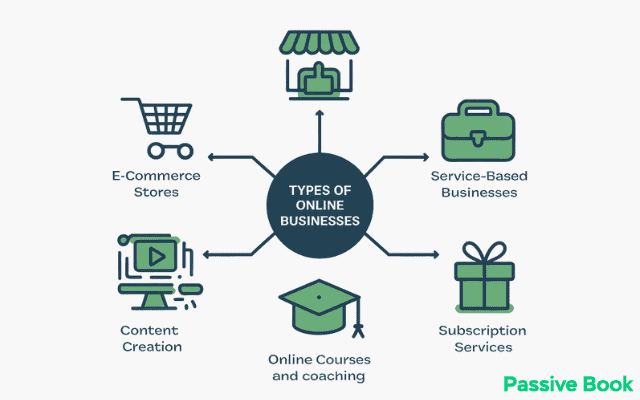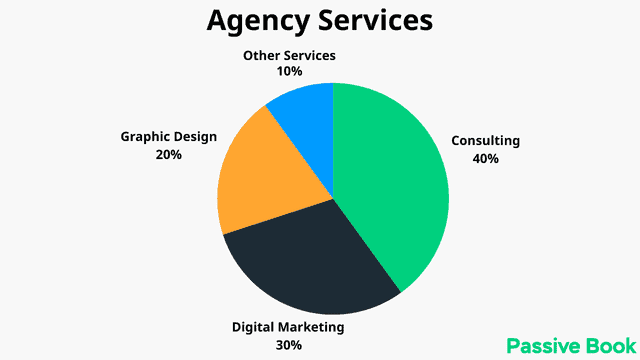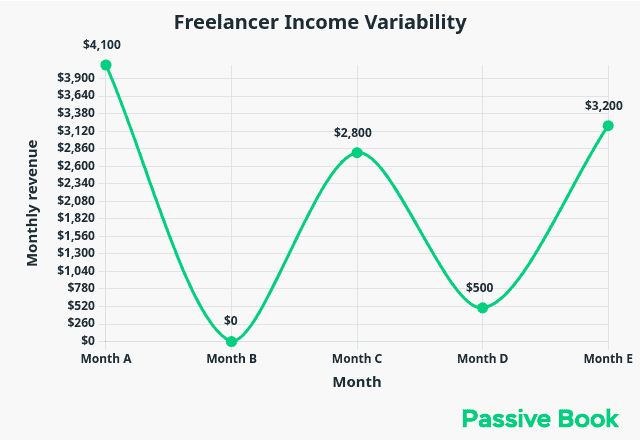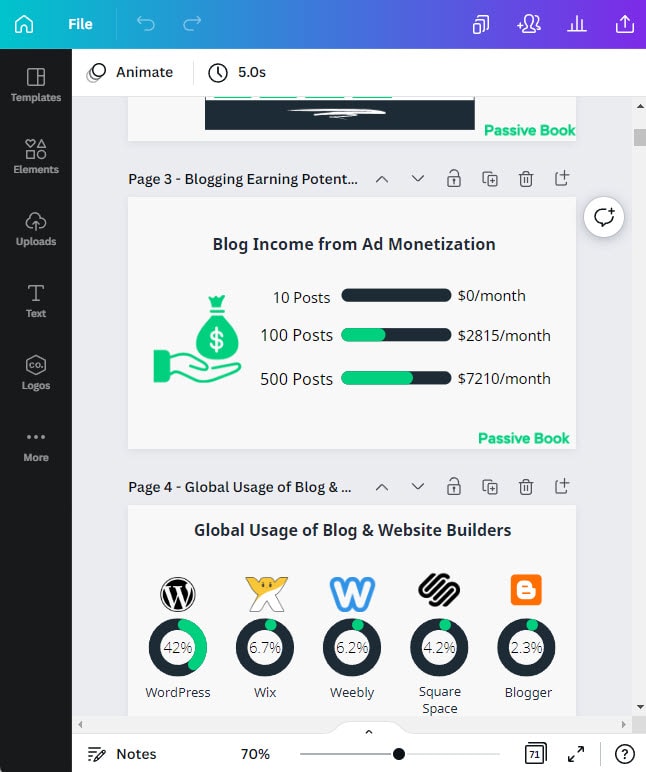You have 15 part-time hours and maybe $500 to invest. Choose the wrong business model and you’ll spend six months building something that generates zero income. I hear this panic in every email: “Should I sell services or build products?”
The honest answer depends on one factor most guides ignore: your timeline to first dollar. Service businesses and other profitable online businesses pay you within 30 to 90 days. Product businesses take 6+ months. That difference determines whether you give up before seeing results.
Here’s what matters. You have limited part-time hours and maybe a few hundred dollars to invest. Service businesses let you earn your first dollar fast. No inventory. No manufacturing. Just your skills and someone willing to pay for them. But there’s a catch most guides won’t tell you about.

What Are Online Services?
Service businesses sell your expertise for payment without physical products or inventory. You get compensated for what you know and can do, not for goods you ship to customers.
Look, I know this sounds obvious. But I’ve seen people confuse “online services” with subscription boxes and info products. We’re talking pure expertise-for-hire here.

For example, social media managers deliver content calendars and account management for small businesses remotely. Virtual assistants handle email management and scheduling from home offices. Freelance writers produce blog posts without ever meeting clients face to face. The defining characteristic is direct skill monetization through customized client work, not products sold repeatedly.
This model works for consulting, coaching, graphic design, copywriting, bookkeeping, and dozens of other professional services. The common thread is transforming your knowledge into revenue streams without startup costs for physical goods.
How much profit can you make?
Kelsey Chance’s Good Chance Creative grew from a one-woman operation to $20,000 monthly revenue in three years. She focused exclusively on small business clients needing social media management. No massive enterprise contracts or venture capital required.
Freelance platform businesses average 15-30% profit margins according to industry data. Compare that to single-digit retail margins for product businesses. Service businesses avoid inventory costs, shipping expenses, and manufacturing overhead.
The math changes when you eliminate physical goods. Every dollar keeps more profit in your pocket. Your main costs? Software subscriptions and internet. That’s it.
Realistic part-time targets sit between $2,000 and $5,000 monthly within 6 to 12 months. This assumes consistent client acquisition and gradual rate increases as you build testimonials and expertise. These numbers reflect actual solopreneur results, not outlier success stories.
Part-Time Service Models
The right service model depends on four factors. Your existing skills determine how quickly you start monetizing without additional training.
Client communication style matters because some services require real-time calls while others work asynchronously through email and project management tools.
Income timeline varies across models. Virtual assistant work generates revenue faster because businesses always need admin support. Strategic consulting takes longer to build. But it commands higher rates and scales better long term.

Startup investment differs by service type for your new business. Freelance writing needs essentially $0 to start. Graphic design may require Adobe Creative Cloud subscriptions or Canva Pro. Social media management sits in the middle with scheduling tools and content creation software.
Virtual Assistant Services
Kalpesh Ghelani built a $4,200 monthly VA agency (revenue, not net profit) managing 8 virtual assistants and 12 clients while keeping his full-time job. He automated client onboarding and used project management systems to minimize his direct involvement.
Entry rates sit at $18 to $25 per hour in affordable U.S. cities according to 2025 market data.
Major metros command higher rates of $30 to $50 hourly. Services include email management, scheduling, bookkeeping, and customer service handled asynchronously.
The business model scales through subcontracting. Once you land clients, you can hire other VAs to fulfill the work while you focus on client relationships and business development. This creates leverage beyond your personal hours.
Social Media Management
Kelsey Chance grew Good Chance Creative to $20,000 monthly managing social content for small businesses and startups. She focused on companies too small to hire full-time marketing staff but large enough to invest $500 to $1,000 monthly.
Managing 3 to 5 client accounts generates $1,500 to $5,000 monthly revenue. Tools like Canva and Buffer automate scheduling workflows, reducing manual work. You create content calendars Saturday mornings and schedule posts for entire weeks.
The recurring revenue model provides income stability. Clients stay for 6 to 18 months on average. This reduces the constant pressure to find new customers every month that project-based services face.
Freelance Writing
One writer built $5,000 monthly income in four months working part-time hours. She started at $50 per blog post and scaled to $150 within six months. Now she charges $300 to $500 for specialized industry content.
The workflow fits part-time constraints naturally. Write articles on Saturday and Sunday mornings. Pitch new clients and handle communication during short weeknight windows. Most clients don’t need real-time availability.
Content marketing drives business growth across industries. Companies need blog posts, email sequences, case studies, and website copy. Demand remains consistent even during economic downturns because digital marketing continues regardless.
Bookkeeping Services
Small businesses need monthly bookkeeping but can’t justify full-time accountants. This creates consistent demand for part-time bookkeepers handling QuickBooks, expense categorization, and financial reporting.
Entry rates range from $30 to $50 per hour depending on complexity and business size. Managing 5 to 8 monthly clients generates $2,000 to $4,000 revenue working 10 to 15 part-time hours weekly.
The workflow fits weekend schedules perfectly. Process receipts and transactions Sunday afternoons. Generate monthly reports the first weekend of each month. Client communication happens via email without requiring real-time meetings.
Certification helps but isn’t mandatory to start. Many successful bookkeepers learn through platforms like LinkedIn Learning or Intuit’s QuickBooks training. Focus on serving micro-businesses with straightforward needs before tackling complex accounting scenarios.
Email Marketing Management
Email generates $36 for every $1 spent, making it the highest ROI marketing channel. Small businesses know email matters but lack time to execute campaigns consistently.
Managing email marketing for 3 to 5 clients generates $1,500 to $3,000 monthly. Services include newsletter creation, automation sequences, list management, and performance reporting. Tools like Mailchimp, ConvertKit, or ActiveCampaign handle technical delivery.
The work batches efficiently into weekend blocks. Write and design emails Saturday mornings. Schedule campaigns and review analytics Sunday afternoons. Most clients need weekly or biweekly sends, not daily management.
This service pairs naturally with copywriting or social media management. Once you handle one marketing channel for a client, they often expand to additional services. This increases lifetime value without proportionally increasing client acquisition costs.
Graphic Design Services
Visual content drives engagement across every platform. Businesses need logos, social media graphics, presentation decks, and marketing materials constantly. The demand never stops.
Beginner designers charge $25 to $50 per hour. Experienced designers command $75 to $150+ hourly. Project-based pricing works better than hourly—charge $500 to $1,500 for logo packages, $200 to $400 for social media template bundles.
Canva and Figma reduce the barrier to entry compared to expensive Adobe Creative Cloud subscriptions. Many successful designers serve small businesses using these tools exclusively, reserving Adobe for complex print work.
The part-time model works through project batching. Take on 2 to 3 projects monthly with clear scope definitions. Deliver drafts on weekends and handle revision rounds via asynchronous email feedback. Screen clients carefully to avoid those expecting unlimited revisions or same-day turnarounds.
Why Service Businesses Fail
Service businesses face specific talent management and client relationship issues that product businesses don’t encounter. You can’t inventory your time or outsource your reputation easily.
23% percent of service business failures stem from inability to manage client relationships and delivery. Scope creep destroys profitability. Poor communication creates refund requests. Missed deadlines kill referrals before you build momentum.
Inconsistent Cash Flow
Inconsistent cashflow from project gaps kills more businesses than lack of skills. You land a client, complete the work, then scramble to find the next one. This feast-or-famine cycle exhausts your motivation and drains your emergency fund.
How to avoid these pitfalls:
- Set 30-day payment terms with 50% deposits upfront
- Maintain a 3-month emergency fund before quitting your day job
- Use retainer contracts for recurring revenue instead of one-off projects
- Never start a new client project until the previous invoice is paid
AI is projected to displace 92 million jobs but create 78 million new ones. McKinsey estimates 30% of work hours could be automated across various occupations. This isn’t fear-mongering. It’s the reality reshaping which services remain profitable long term.

65% of workers feel optimistic about AI, but 77% worry about job displacement. This creates opportunity for service providers positioning AI as enhancement rather than replacement. You need to build your new business around what machines can’t replicate.
High-touch services survive automation. Strategic consulting requires judgment and experience pattern recognition beyond current AI capabilities.
Personalized coaching demands empathy and relationship building. Client relationship management needs trust that algorithms can’t establish.
The services most vulnerable to AI are purely execution-based. Data entry, basic transcription, simple graphic design templates, and routine bookkeeping face automation pressure. If your service involves zero strategic thinking or customization, you’re building on shaky ground.

The Income Ceiling Problem
The hourly model caps your earnings at 15 part-time hours. Even at $125 per hour, you max out at $7,500 monthly before taxes. The average freelance rate is $28 per hour according to Payoneer data, limiting most beginners to $1,680 monthly.
Freelancers working 10 to 19 hours weekly earn a median $10,000 annually. That’s $833 monthly. This ceiling exists because you’re trading time for money in a fixed equation.

Scaling requires breaking the hours-for-dollars trap. Raising rates helps but only goes so far before you price out your target market. Retainer models provide recurring revenue but still limit total clients you can serve personally.
Productization offers the real solution. Turn your service into packages, templates, or mini-courses that deliver value without your direct time. This transforms your business model from pure service to a hybrid approach that scales beyond your part-time hours.
Get 3 Clients Organically
Anna Burgess Yang landed 12 new clients in 2024 using primarily organic methods. Two came from LinkedIn freelancer calls. Eight came from content she posted consistently on the platform. Zero came from paid advertising.
LinkedIn posts generate 9x higher engagement than ads for professional services according to HubSpot research. Your network already includes potential clients or people connected to decision-makers. The platform rewards consistent, valuable content with algorithmic distribution.
Chelsea J built her freelance business using cold email with personalized messages and targeted research. She identified companies hiring for roles she could fulfill as a contractor. Her emails referenced specific company challenges and proposed solutions rather than generic pitches.
Your existing network converts 5 to 10 times higher than cold outreach. Former colleagues know your work quality and reliability.
They trust you enough to take a meeting without extensive vetting. Start there before expanding to cold prospecting. Focus on building your customer base through warm email marketing to former colleagues before investing in paid ads or complex business ideas like app development.
Service vs Product
Services generate your first dollar within 30 to 90 days. Product businesses typically take 3 to 6 months before seeing revenue. This timeline difference matters when you’re bootstrapping with limited capital and part-time hours.
Service profit margins reach 15 to 30% for professional services. Retail product margins hover around 2 to 3% after accounting for cost of goods sold, shipping, returns, and marketing expenses. The math favors services for profitability per dollar earned.
Service businesses require 70-90% less startup capital than product businesses based on the startup costs comparison in this article ($0-500 for services vs. $2,000-5,000+ for product businesses with inventory). You avoid inventory purchases, manufacturing costs, warehousing, and shipping infrastructure. Your main investments are time and basic software tools.

The long-term trade-off centers on scalability. Services require ongoing work for every dollar earned. You deliver customized solutions for each client. Products scale infinitely once built because you create once and sell repeatedly without additional fulfillment work. This includes info products, SaaS tools, and app development projects – all of which require significant upfront investment before generating revenue. Service businesses flip this model by earning while you build expertise.
Long term strategy often combines both models. Use service income to fund product creation later. Your client work reveals pain points and needs that products can solve. This path reduces risk while building toward passive revenue streams. It’s not sexy, but it funds the sexy stuff later.
Work Around Your 9-to-5
Kalpesh Ghelani built his $4,200 monthly VA agency while keeping his full-time job. He batched client communication into morning and evening windows. Project management systems handled task delegation to his team without real-time oversight.
This data proves part-time business models work at scale. The key is matching your service delivery to async communication rather than constant availability.
Admin, invoicing, and tracking your net profit get batched during 4-hour Sunday afternoon blocks. Use tools like Wave for free invoicing and accounting. Set up email templates for common client questions. Automate everything possible to protect your limited hours.
Communication boundaries matter more than service quality. Use Calendly to control meeting schedules and prevent clients from assuming 24/7 access. Set email auto-responders explaining your response time is within 24 hours. Most clients respect clear expectations.
The biggest mistake is accepting clients requiring real-time availability. Screen prospects during initial calls. If they expect instant Slack responses or same-day turnarounds, politely decline. Your business model only works when you enforce boundaries.
Tools Under $50/Month
Your essential toolkit costs $15 to $34 monthly (including your internet connection) for the first six months. This includes everything you’ll need to deliver professional services and manage client relationships. Adding optional tools later makes sense as revenue grows.
Zoom: $15 monthly for professional client meetings with screen sharing and recording capabilities. The free tier works initially but limits meetings to 40 minutes, creating awkward interruptions during discovery calls.
Canva: $0 to $13 monthly for graphics and deliverables. The free tier handles basic social media graphics and simple designs. Upgrade to Pro when you need brand kit features and premium templates for client work.

Wave: Free invoicing and accounting software that handles everything from payment processing to expense tracking. You won’t need QuickBooks or Freshbooks until you scale beyond basic bookkeeping needs.

Google Workspace: Free tier covers professional email and document collaboration. The business tier at $6 monthly per user adds custom domain email that looks more professional for client communication.
Avoid the tool trap that drains cash before you earn revenue. Start with free tiers and upgrade only when features become blocking issues. Most solopreneurs waste money on premium tools they never fully utilize.
Your First 90 Days
The average time to land your first freelance client is 1 to 3 months according to Freelancer Map survey data. This timeline assumes consistent effort and strategic outreach, not the sporadic part-time attempts when you feel motivated. Trust me, motivation disappears around week 3.
Weeks 1-4: Build your portfolio using discounted projects for testimonials. Offer services at 50% off in exchange for detailed case studies and permission to use results publicly. Target 2 to 3 portfolio pieces that demonstrate your specific expertise.
Weeks 5-8: Launch outreach targeting 50 prospects via LinkedIn and email. Personalize every message with specific references to their business challenges. Track proposals sent, response rate, and conversion percentage in a simple spreadsheet.
Weeks 9-12: Close your first 2 to 3 paying clients at entry rates – now you’re ready to build sustainable revenue streams. Focus on delivery quality that generates testimonials and referrals. Underpromise and overdeliver to create word-of-mouth momentum for month four.
Track your metrics religiously from day one. How many prospects did you contact? What was your response rate? Which outreach messages converted best? This data reveals what works for your specific service and target market.
The timeline compresses or extends based on your existing network size and service demand. If you have 200 LinkedIn connections in your target industry, you’ll likely close clients faster than starting from zero followers.
Is It Worth It?
Service businesses make sense if you have marketable skills, 10 or more part-time hours available, and a 6-month financial runway. These three factors determine success more than talent or credentials. Your first model probably won’t be your last.
59% percent of freelancers earn more than they did in traditional jobs according to Forbes Advisor 2024 data. This statistic reflects people who committed long enough to build client bases and raise rates beyond entry level.
Service businesses aren’t worth it if you’re seeking passive income, wanting immediate scalability, or unwilling to make money by selling yourself and building an online presence. The model requires active client management and ongoing service delivery. There’s no “set it and forget it” option.
The hybrid approach offers the best long-term path. Use service income to fund product creation later. Your client work reveals specific pain points that digital products, courses, or tools can solve at scale.
Your decision should center on speed to revenue and available capital. Services win on both factors for time-constrained solopreneurs. Products make more sense once you’ve established cashflow and identified scalable opportunities through client work.
Frequently Asked Questions
Is There a Downside to Selling Online?
The main downside is income ceiling from limited hours. You’re trading time for money, which caps at your available part-time hours multiplied by your hourly rate. Scaling requires raising rates, hiring subcontractors, or productizing services into scalable offerings that don’t require your direct time per client.
How Long Until Service Income Replaces Day Job Salary?
Most solopreneurs need 12 to 24 months to replace full-time income through service work. This assumes consistent client acquisition, gradual rate increases, and retainer contract conversion. Starting part-time while employed reduces financial pressure and allows you to be selective about clients rather than desperate for any revenue.
What If I Have No Credentials or Portfolio?
Create portfolio pieces through discounted initial projects or volunteer work for nonprofits. Offer services at 50% off in exchange for detailed testimonials and case study permission. Three strong portfolio examples with measurable results matter more than credentials when landing your first paying clients.
What Next?
You now understand the real economics of service businesses for time-constrained solopreneurs. The model works if you match the right service to your skills, accept the income ceiling trade-offs, and commit to consistent client acquisition.
Service businesses aren’t glamorous. You’re not building the next unicorn startup. But you can generate $2,000 to $5,000 monthly within a year working part-time. That money funds your next move, whether it’s product creation, increased investment capital, or simply supplementing your day job income.
If you found this breakdown valuable, hit the share buttons below. Others in your network are asking the same questions about whether selling online services is profitable and worth it. Help them skip months of confusion by sharing specific insights that cut through the noise.
What’s the biggest obstacle preventing you from launching your service business this month? Share your answer in the comments below.
Share this post with your friends & followers:
